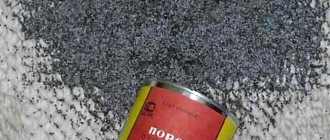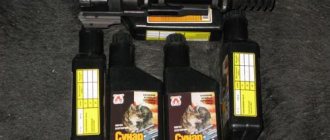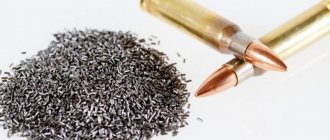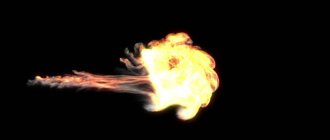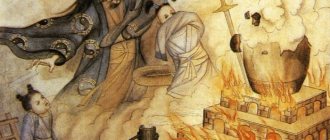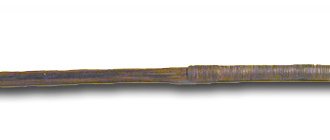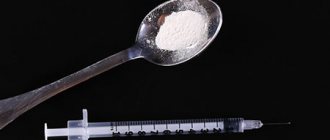Is it possible to replace gunpowder with gasoline? – Security agency “Zheti Arlan”
Not only gunpowder has latent energy: firewood, coal, kerosene, and gasoline also have energy that can be used during their combustion.
So why not use another fuel, such as gasoline, for the shot? When burning, gasoline also turns into gases. Why not place a tank of gasoline above the gun and pipe it into the barrel? Then, when loading, you will only need to insert the projectile, and the “charge” itself will flow into the barrel. Just open the tap!
It would be very convenient. And the quality of gasoline as a fuel seems to be higher than the quality of gunpowder: if you burn one kilogram of gasoline, 10,000 large calories will be released, and one kilogram of gunpowder will produce only 665-910 calories when burned, that is, 11-16 times less than gasoline. This means that a kilogram of gasoline produces so much heat that it could heat 10,000 liters of water by one degree, but a kilogram of gunpowder will heat only 665-910 liters of water.
Why don’t they “shoot with gasoline”?
In order to answer this question, you need to look at how gasoline burns and how gunpowder burns. In the open air, both gasoline and gunpowder do not burn very slowly, but also not very quickly. They burn but don't explode. There is not much difference between gasoline and gunpowder.
But gasoline and gunpowder will behave completely differently if they are placed in a closed space, closed on all sides, deprived of air flow, for example, in a gun barrel. In this case, gasoline will not burn: its combustion requires an influx of air, an influx of oxygen.
Gunpowder in a closed space will burn very quickly: it will explode and turn into gases. The combustion of gunpowder in a closed space is a very complex, peculiar phenomenon, not at all similar to ordinary combustion. In science, such phenomena are called “explosive decomposition” or “explosive transformation”, only conditionally retaining the more familiar name “combustion”.
Why does gunpowder burn and even explode without air?
Because the gunpowder itself contains oxygen, due to which combustion occurs.
In a confined space, gunpowder burns extremely quickly, a lot of gases are released, and their temperature is very high. This is the essence of an explosion; This is the difference between an explosion and ordinary combustion.
So, to get an explosion, you need to ignite gunpowder in a confined space. The flame will then spread very quickly, almost instantly, over the surface of the gunpowder - it will ignite. And then the gunpowder will burn and turn into gases.
This is how the explosion proceeds. It is possible only in the presence of oxygen in the explosive itself. This is precisely the peculiarity of gunpowder and almost all other explosives: they themselves contain oxygen, and they do not need an influx of oxygen from the outside.
Let's take, for example, gunpowder, which has been used since time immemorial: black powder. It contains coal, saltpeter and sulfur mixed. The fuel here is coal. Nitrate contains oxygen. And sulfur was introduced so that the gunpowder would ignite more easily; In addition, sulfur serves as a bonding agent; it connects coal with saltpeter. During an explosion, not all of this powder turns into gases. Most of the burnt gunpowder, in the form of tiny solid particles, is deposited on the walls of the barrel bore (carbon deposits) and is released into the air in the form of smoke. That's why this kind of gunpowder is called smoky.
Modern guns usually use smokeless pyroxylin powder. It is made from a strong explosive - pyroxylin, treated with a mixture of alcohol and ether. And pyroxylin, in turn, is obtained from cotton treated with a mixture of nitric and sulfuric acids. Pyroxylin powder, like black powder, contains oxygen. This oxygen is released during explosive transformation, and due to it the combustion of gunpowder occurs.
When burned, pyroxylin powder turns into gases and does not produce smoke. So, gunpowder cannot be compared with gasoline: gunpowder contains everything that is needed for its combustion, but gasoline does not contain oxygen. Therefore, when we need to achieve rapid combustion of gasoline in a closed space, for example, in the cylinder of a car engine, we have to arrange special complex devices in order to pre-mix gasoline with air to prepare a combustible mixture.
Fig No. 1. The combustion of gunpowder produces much more gases than the combustion of gasoline.
Gunpowder is much more convenient in this regard. But it's not just about convenience. We have already said that one kilogram of gasoline provides 10,000 large calories of heat. But it turns out that for every kilogram of gasoline to burn, you need to add 15.5 kilograms of air to it. This means that 10,000 calories come not from one kilogram, but from 16.5 kilograms of the combustible mixture. One kilogram of it will burn only about 610 calories. This is already less than one kilogram of pyroxylin gunpowder.
As you can see, the mixture of gasoline and air is inferior to gunpowder in caloric content. However, this is not the main thing. The main thing is that when gunpowder explodes, a lot of gases are formed. The amount of gases formed during the combustion of one liter of black and pyroxylin powder is shown in Figure No. 1. This volume would be occupied by gases when cooled to zero degrees and at a pressure of one atmosphere, that is, at normal pressure. If we take the volume of powder gases at the explosion temperature, it will be many times greater. From Figure No. 1 it can be seen that pyroxylin powder emits more than four times more gases than smoky black powder. Therefore, pyroxylin gunpowder is stronger than smoky gunpowder.
But this does not exhaust the advantages of gunpowder over conventional fuels. The rate of conversion of gunpowder into gases is also of great importance.
The explosion of a powder charge when fired lasts only a few thousandths of a second. The gasoline mixture in the engine cylinder burns ten times slower.
The powder charge of a 76mm gun is completely converted to gases in less than 6 thousandths (0.006) of a second. Such a short period of time is even difficult to imagine. After all, a “blink”—the blinking of a human eyelid—lasts about a third of a second.
It takes fifty times less time to explode a powder charge. The explosion of a smokeless powder charge creates enormous pressure in the gun barrel: up to 3,500-4,000 atmospheres, that is, 3,500-4,000 kilograms per square centimeter.
The high pressure of the powder gases and the very short time of explosive transformation create enormous power when fired. None of the other fuels can create such power under the same conditions.
V.P. Grandchildren. Artillery. Source
7arlan.kz
EDUCATION IN MOSCOW
Black powder is a mechanical mixture of three substances:
- saltpeter
- sulfur
- charcoal.
When ignited, gunpowder burns for some time, with the burning rate increasing as pressure and temperature increase.
In a confined space, these processes proceed rapidly, releasing large amounts of gases. This is the essence of an explosion: to get it, gunpowder must be ignited in a confined space. Then the flame will spread with lightning speed over the entire surface of the gunpowder, releasing gas and energy - this is the principle of operation of a firearm.
Gunpowder was invented a long time ago, and many facts speak in favor of the fact that the Chinese thought of it.
True, some researchers are inclined to conclude that in the 1st century the recipe for its preparation came to China from India. This statement can be considered more or less reliable, given that India and Southeast Asia had large reserves of saltpeter. And only here saltpeter is spontaneously released from the soil, and it is quite natural that the population quickly became acquainted with its properties.
STAGE ONE. START
Any revolution goes through several stages. The great “gunpowder revolution” began around the second half of the 13th century, during the Crusades, when gunpowder entered Europe from India and China - through the Spanish Moors, and partly through the Arabs.
Venice appears to be the birthplace of firearms. And although many researchers are inclined to the Arabic version, firearms first appeared in Europe in the 1320s in Northern Italy.
Already in 1338, guns that “threw thunder and lightning” were known in England, in 1342 - in Spain, in 1370 - in Sweden, and in 1382, cannons fired from the walls of the Moscow Kremlin at hordes of Tatars.
Initially these were artillery pieces mounted on the walls of fortresses. But less than half a century had passed before cannons began to be used both as siege weapons and in field battles.
The oldest depiction of such a cannon is preserved in an English manuscript from 1326. In the manual for the young heir to the throne, the future English king Edward III, there is a beautiful miniature in which a warrior in chain mail lights the fuse of a vase-shaped weapon.
The first artillery pieces, called bombards (from Italian bombo et ardore - “thunder and fire”), had a short barrel and sometimes a very large caliber. They were made from strips of iron, rolled and fastened with red-hot iron hoops.
The guns did not have trunnions or carriages; the barrel was placed in a wooden block and attached to it like a musket barrel. Bombards fired stone cannonballs, pieces of iron and arrows, although there is evidence that iron cannonballs were also used in 1391.
In the 15th century, artillery became widespread. Mortars appeared. With the development of foundry, bombards of a caliber unsurpassed in subsequent centuries came into service with armies.
The most significant concentration of artillery in the fighting of that period was created by the Turkish Sultan Mehmed II during the siege of Constantinople in 1453. All 68 guns brought to the city walls were combined into 14 batteries. Most fired stone cannonballs weighing 90 kg, and the guns threw cannonballs weighing from 226 to 552 kg.
The largest was the bombard and Basilica with a caliber of 76 cm, made by the Hungarian master Urban . It was moved by 200 men and 60 oxen, and it took two hours to load the cannon with a 725-kilogram stone core. The firing range was about 1600 meters.
The first information about the use of hand-held firearms - “ruchnitsy”, which were more reminiscent of small-caliber cannons than modern guns, dates back to the 15th century. Contemporaries quickly appreciated the huge reserve of hidden capabilities contained in hand-held firearms, and treated them as a science-intensive project, the return on which was proportional to the investment.
Gunsmiths and artisans in Europe and the Middle East worked tirelessly to improve it. In the first half of the 15th century, the matchlock was invented, marking a decisive separation between small arms and artillery.
This simple mechanism automated the process of bringing the wick to the seed and made it possible to overcome the main drawback of early weapons - difficulties with aimed fire.
In its most primitive form, the wick lock included a single part - an s-shaped lever attached to the transverse axis, the lower end of which served as a trigger, and the upper, forked, with a smoldering wick clamped in it, was brought to the powder shelf.
The matchlock was constantly improved. In Europe, in a developed form, it acquired a mainspring and a sear.
At the same time, hand weapons received a full-fledged stock - instead of a primitive pole stock or a rough wooden block. To protect the shooter's face from being burned by seed powder, the ignition hole was moved to the side, to the right side of the barrel.
Directly below the hole, a small plate with a recess was welded to the barrel. This part, called the powder shelf, began to be equipped with a cover attached to the axis. The barrel of hand-held weapons became increasingly longer, and the caliber increased, which sharply increased the combat capabilities of the weapon.
It is believed that a musket with a caliber of 20 mm or more was capable of piercing a knight's cuirass from 50 steps. The consequences of a gunshot wound were the most tragic: fragments of clothing and armor fell into the wound, infecting it, which in the 14th-16th centuries almost inevitably led to the death of a warrior.
By the end of the 16th century, infantrymen armed with matchlock guns already accounted for up to half of all infantry. The level of development of firearms has grown so much that they have already differentiated into combat and hunting. In a similar way, there was a difference between the weapons of the townspeople and the city militia, on the one hand, and the weapons of professional soldiers and nobles, on the other.
At the end of the 15th and beginning of the 16th centuries, rifled barrels appeared. Spiral rifling (grooves) on the inner surface of such barrels imparted a rotational movement to the flying bullet, which significantly increased the range of aimed fire. But due to the fact that it was difficult to load the barrel (the bullet was driven into the barrel with a hammer using a ramrod), it did not take root in military weapons, but was used mainly in hunting, where the speed of reloading the weapon did not have such a high price as in war.
The most important event of this century was the emergence and beginning of mass use of spark locks: wheel locks and impact flint locks.
It is believed that the schematic diagram of the wheel lock is contained in the manuscripts of Leonardo da Vinci of the late 15th and early 16th centuries, which allows us to consider the greatest artist of the Renaissance as its inventor.
The main part of the lock mechanism is a wheel with a notched rim. Rotating the wheel and rubbing it against the flint made it possible to create a fountain of sparks in the desired direction - onto the shelf with the ignition powder.
The silicon was clamped in the jaws of the trigger, which was pressed against the wheel by a leaf spring. The rotation of the wheel was caused by a mainspring. Before the shot, the wheel was “started” with a special key, like an ordinary watch.
In the 16th century, in almost all European states, artillery became an independent branch of the military. Field artillery appeared, and the foundations of artillery science were born both in the production of guns and in the field of their use.
Now almost all tools were cast from copper or cast iron. A classic design of a gun was formed, loaded from the muzzle (although breech-loading systems continue to exist), with a ignition hole in the breech and trunnions for mounting on a gun carriage. With minor changes, this design lasted until the middle of the 19th century.
STAGE TWO. DEVELOPMENT
In the XVII-XVIII centuries, a decisive revolution took place in the European arms industry. The effectiveness of the wheel lock was much higher than the matchlock. However, the high cost and complexity of manufacturing did not allow it to become the only and generally accepted mechanism.
It became another spark lock - a flintlock.
It appeared somewhat later than the wheeled one and received many design options, although the principle of producing sparks - the impact of the trigger with the flint on the flint (arm) - remained unchanged.
The earliest type of impact flintlock is considered to be the so-called snephans or snephan, translated from Dutch as “pecking rooster” (a trigger falling on the flint with a piece of flint clamped in the jaws resembled a blow with a beak).
Before firing, the shooter pulled the trigger back until the latch (sear), which caught the protrusion in its lower part, was activated, and the trigger was cocked.
A flint, pressed by a special spring, was lowered onto the seed shelf with gunpowder. When the trigger was pressed, the trigger leg was released, and its head, with silicon clamped in the jaws, was forcefully lowered onto the steel flint, striking a sheaf of sparks onto the gunpowder.
In the Middle East, another type of flint-and-percussion castle became widespread - the Mikelet (Mediterranean, or Spanish-Moorish type castle).
It is interesting that in Russia this type of lock was often used in the manufacture of Cossack arquebuses - a special type of Russian military weapon, the design of which combined the features of European and Ottoman firearms. It is possible that this type of gun originally appeared on the southern borders of Russia, among the Cossacks, which gave it its name.
The flintlock lock of the so-called French type, which served without significant changes for more than two hundred years, became a real weapon long-liver. Its design was developed by the Parisian gunsmith Marin le Bourgeois around 1610.
In Russia in the 18th-19th centuries it was officially called a battery, since its flint was connected to the lid of the powder shelf into a single battery. The mainspring and trigger mechanism were mounted on the inner surface of the locking board, and the trigger could occupy the safety and combat cocking positions. This type of castle existed without significant structural changes until the first third of the 19th century.
At the turn of the 16th-17th centuries, wheel and flintlocks made it possible to equip cavalry with firearms. Saddle pistols and carbines appeared in Europe in the second quarter of the 16th century.
Olstra - cavalry pistols - had a characteristic handle shape with a slight angle of inclination relative to the barrel and a massive, flattened ball knob, necessary for balancing the weapon when firing and quickly removing the pistol from the saddle holster (there is still a misconception that pistols This type could also be used as combat maces).
In the 15th century, cavalry pistols, as a rule, were already equipped with versions of the French lock and differed significantly from their predecessors in the shape of the handle.
By the end of the 18th century, all European armies were armed with guns and pistols of the same type and standardized in size and caliber with battery-operated flintlocks. Their rate of fire was increased to six rounds per minute. Now infantry armed with firearms is the real queen of battles.
The development of artillery during this period went in the direction of streamlining the calibers of guns, increasing mobility and reducing the cost of their production. In the 18th century, in almost all world powers, artillery was already divided into regimental, field, siege and fortress. The first artillery regiments and brigades began to form.
STAGE THREE. SEARCHING FOR NEW SOLUTIONS
All European countries entered the era of the Napoleonic Wars with exactly the same weapons - smooth-bore muzzle-loading shotguns with a bayonet, pistols and carbines. To speed up the loading process, they used so-called cartridges - paper cartridges with a powder charge and a bullet.
When preparing the weapon to fire, it was necessary to bite the cartridge, pour some of the gunpowder onto the lock shelf, pour the remaining gunpowder into the barrel and hammer the bullet with a ramrod, using paper as a wad.
The artillery of all the warring countries consisted of smooth-bore muzzle-loading guns, which were also loaded with caps.
The rate of fire and accuracy of smooth-bore muzzle-loading weapons were pushed to the limit. After the end of the Napoleonic wars, weapons specialists in European countries began to improve all firearms systems.
The result was not long in coming: the flint-percussion battery lock was replaced by a capsule lock, and smooth barrels were replaced by rifled ones. All this affected the accuracy and rate of fire of the weapon. The leaders of this “arms race” of the 19th century were English, French and German gunsmiths. Russia's lag in rearmament issues cost it defeat in the Crimean campaign of 1854-1856.
In the middle of the 19th century, the first sufficiently reliable systems of breech-loading weapons with Dreyze and Chassepot needle sliding bolts were adopted into service in Germany and France.
In the 1850s - early 1860s, a real revolution in firearms was made by the French gunsmith Potte , who created a modern type unitary cartridge. At first it was used for hunting and sporting weapons, but after the modernization of the gunsmith Boxer, who first used a brass sleeve, it became widespread in military weapons.
The creation of a unitary cartridge led to the spread of repeating repeating rifles and revolvers, the first and most successful of which were the products of North American gunsmiths Spencer, Henry, Colt, Remington and others.
And at the end of the 19th century, the legendary German multi-shot rifle of the 1898 model, the Russian three-line rifle of the 1891 model, known in Russia as the Mosin rifle, and the Mosin-Nagant rifle appeared, which were in service with minor upgrades until the end of World War II.
- Almost the same changes occurred in artillery. And here the gunsmiths faced three interrelated tasks: increasing the rate of fire,
- shooting accuracy
- effectiveness of defeat.
Already from the middle of the 19th century, the transition to rifled artillery began in all European countries, which affected the firing range and accuracy. Then, due to the introduction of breech-loading guns, the rate of fire was increased.
Using centuries-old developments, designers developed more and more new types of projectiles.
During the Russo-Japanese War of 1904-1905, Russian artillerymen used indirect fire for the first time, and a mortar was created and used.
By the beginning of the First World War, artillery was divided into field (light, horse, mountain) and heavy (siege). During the war, escort artillery, anti-aircraft and anti-tank artillery appeared.
The Second World War gave a powerful impetus to the development of artillery, especially anti-aircraft, anti-tank, rocket and self-propelled artillery, and the use of high-power and special-power artillery began.
* The largest cannon in human history is the German DORA mortar.
The third stage of the “great gunpowder revolution” ended with the end of World War II. A new era has begun - the era of the dominance of automatic firearms: machine guns, submachine guns, automatic assault rifles and pistols.
This period was marked by the creation of two legendary systems, which in terms of popularity, efficiency and reliability have no equal in the entire world history of weapons - the Soviet Kalashnikov assault rifle and the American M-16 . But this is a topic for a separate story. The revolution continues...
What causes gunpowder in cartridges to explode?
The primer has rotted into the cartridges
Mercury fulminate capsule...
POWDER DOES NOT EXPLODE, BUT FIRE FROM THE CAPSULE! Due to the high rate of combustion of gunpowder, a sharp increase in pressure occurs, as a result of which the bullet is pushed out of the barrel at high speed!
Where did you see this? To the cinema? A primer is used to ignite the gunpowder in cartridges. In flintlock guns, gunpowder was ignited by a spark.
From the heat, a reaction occurs with the release of heat, and with large volumes of gunpowder - an explosion
it does not explode - it burns quickly in a confined space. ignites from the impact of the capsules.
Not in the cartridges but in the cartridge case, it does not explode but ignites, the source of ignition is the primer, the firing pin hits it, the firing pin hits the firing pin, etc. In general, the process is very complex...
touch.otvet.mail.ru
gunpowder explosion how to make
gunpowder explosion how to make.
| How black powder is made. Do not mix all the ingredients in the coffee grinder! Making black powder How to make black... |
| Tags: |
| In this video we will tell you how to make black powder. We do not recommend or encourage you to make... |
| Tags: |
| The spark in the lighter ignites the gas. It is a fact. What happens if a spark hits a pile of gunpowder? As you know, they used to use... |
| Tags: |
| Hello everyone, dear friends, in this video I will show you 3 simple ways to make a wick for your pyrotechnics and... |
| Tags: |
| You can buy pure MAGNESIUM here Hello everyone, today we will deal with another interesting... |
| Tags: |
| What happens if you make a firecracker weighing almost 1.5 kg and explode it? The explosion of the largest homemade firecracker. Test of a huge... |
| Tags: |
| If anyone is interested in how to make a mobile detonator, write and I will make a video on how to make it. |
| Tags: |
| PROFIT Group: real forex, not a fish in troubled waters! Become a trader - a modern, successful, rich person... |
| Tags: |
| This video shows in detail the process of granulating black powder. Of the many technologies that exist... |
| Tags: |
| WE MAKE SIMPLE GUNDOWPOWDER WITH YOUR OWN HANDS AT HOME. "Silver gunpowder". from potassium permanganate and... |
| Tags: |
| Attention! This video does not encourage you to repeat what is shown and is made for informational purposes only!… |
| Tags: |
funer.ru
Homemade firecracker at home from matches, salt, gunpowder and batteries
At home, you can make firecrackers from various available materials. It is important to follow several safety rules and requirements to avoid negative consequences.
Absolutely all firecrackers work on the same principle. A substance that quickly ignites is placed in a sealed structure. Next, the fuse is applied.
The substance ignites quickly. As a result of expansion, a strong release of energy occurs. It hits the air and the man hears a pop.
What can you take to make firecrackers with your own hands?
You can make a homemade firecracker with your own hands. There is a simple and affordable method that does not require the use of complex materials.
Note! To create firecrackers, it is important to find sulfur and grind it.
Manufacturing technology:
- You need to take a piece of paper and roll it into a tube.
- One end is bent and wrapped with tape.
- Sulfur or purchased gunpowder is placed in the resulting tube.
- Excess paper is cut off and compacted thoroughly using a match.
- The second end of the tube is bent and taped.
The result is a small package containing an explosive substance. Now take the rod from the pen, which will serve as a wick for a homemade firecracker.
A small piece is cut off. The other end of the wick is secured with pliers. The structure needs to be reinforced with tape.
There is another proven method. Chemicals are used to make firecrackers. This is not the best option for a home to explode the mixture.
It is necessary to prepare the following materials:
- Silver paint in powder form (sold in repair or construction stores).
- Manganese mixture (you can ask at the pharmacy or order in the online store).
A mixture of two powders is taken in equal proportions and poured onto a prepared sheet of paper. Everything needs to be mixed thoroughly.
The mixture is rolled into a sheet of paper and secured with tape. For convenience, make a wick and you can set it on fire.
How to make a firecracker from paper and matches
Be sure to follow technology and safety rules. You can make your own firecracker from paper and matchboxes.
Important! It is strictly forbidden to engage in the manufacture of pyrotechnics at home if you do not have experience and relevant knowledge.
To do this you need to prepare the following materials:
- Matchboxes.
- Scotch.
- Pliers.
- Wine corks.
- Pencils of different shades.
- Awl.
- Needles.
- Scissors.
- Pen rod.
| Stages | Detailed description |
| 1 | You need to take match heads and remove the sulfur from them. This is a labor-intensive process that requires time. To make the task easier, you can use pliers. After cleaning, the sulfur is thoroughly crushed to a powder consistency. |
| 2 | You need to take two wine corks, wrap them in a sheet of paper and secure them with tape. One of the plugs is wrapped with metal wire |
| 3 | You need to take the prepared sulfur and use a needle to push it into the refill of a ballpoint pen. |
| 4 | The remaining portion is poured into a tube made of paper. To get a loud bang, you need to compact the material carefully. |
| 5 | The tube is closed with a stopper and the wire is wound |
| 6 | A small hole is made in the central part of the finished structure. A wick, which is made from the refill of a ballpoint pen, is attached to it. |
The finished product will be an excellent replacement for a real firecracker.
Battery stretcher
There is a simple and affordable technology for creating a firecracker banner.
It is important to prepare carefully and follow the instructions:
- You need to pierce the firecracker with a needle. The optimal distance is 1/3 from the head, where the sulfur is located. A nichrome thread is placed into the finished hole. Copper wires are screwed to it. It is strictly forbidden to use a soldering iron. The finished structure is reinforced with tape in one turn.
- Next, the wires are screwed close to the walls of the firecracker. They must be attached tightly.
- A cardboard box is used to make a place without a lid where the explosion will occur. The cut out parts of the PET bottle are glued inside. It helps direct the explosion and keep people safe.
- The cardboard parts are attached to each other with ordinary glue, and the bottle parts are fastened with quick-drying Moment glue. In order for the structure to dry evenly, it is necessary to secure the parts with clothespins.
- A hole is made at the bend. It should not be located in the central part.
- The firecracker is placed in the very corner. It is fixed on top with a strip of tape.
- Next, you need to solder 4 batteries in the following sequence: the first with “+” is soldered to the second with “-”, etc. You need to attach a clothespin to them and secure everything with tape.
- Contacts are attached to a clothespin, which are made from a pushpin and a separate switch. You don't have to buy expensive batteries to create firecrackers.
- You need to insert a piece of cardboard between the contacts and secure it tightly with thread. The wires are attached to each other with firecracker wires. If you pull it out, a powerful explosion occurs.
To avoid negative consequences, you need to check the correct assembly and fastening of parts.
Consequences of the explosion
People who have injuries to their face, hands or arms often turn to a traumatologist for help. The remaining areas of the body are considered protected in the event of an explosion if the person is wearing clothing.
Note! Exploding firecrackers in the wrong hands can lead to dire consequences for health.
There is also a high probability of injury and burns to the eyeball, hands or face.
A person gets injured if he handles pyrotechnics carelessly and does not follow basic safety rules.
It is strictly forbidden to tilt your head over the wick to check whether there is combustion or not.
You cannot hold a firecracker in your hands, because it will explode near your face and cause injury. If a person did not follow the rules and received a burn, it is necessary to urgently call an ambulance.
Cover the affected area with a bandage or clean cloth. It is prohibited to apply snow, butter, sour cream or other folk remedies.
The law does not approve
From cowboys we smoothly move on to the most powerless (and at the same time the most numerous) category of “mummered” shooters - reenactors. There are only a few hunters with smokers, there are dozens of “cowboys” and simply lovers of shooting from muzzleloaders, but there are already thousands of recons across Russia. Moreover, their “weapons” often cannot be called such at all. As a rule, these are harmless “scarecrows” made in the image and likeness of ancient muskets.
Shooting "Brown Bess" - Long Land Musket of 1756
Such “replicas” are quite common abroad; the most common ones are from the Italian ones, “Davide Pedersoli”, “F.lli Pietta”. However, taking into account delivery to the Russian Federation, they cost quite a lot of money, so participants in military history clubs try to make do with local material. A few years ago, representatives of the Tula Arms Factory timidly offered to make their own contribution to the common cause and prepared documentation for the production of a whole line of replicas from the period from the 17th to the 19th centuries.
Project of a replica of an ancient musket proposed by Tula gunsmiths
Let me remind you that the production of civilian weapons in Tula has been curtailed, and the plant itself is, in fact, bankrupt. The release of copies of ancient weapons could at least somehow help the enterprise. But such “scarecrows” in Russia have a very precarious legal status; no one wants to undertake their legalization. The latest high-profile event is the case of Moscow reenactor Vladimir Masyuk. The police seized from him a copy of a Streltsy matchlock (note - not a capsule, not a flintlock - a MATCH, Karl!) musket of the 17th century and opened a criminal case.
According to the police, Vladimir Masyuk’s matchlock “weapon” poses a serious public danger
In general, if you see a person buying a “smoke” in a hunting store, do not be surprised. There are his fans in Russia. The only pity is that there are very few of them...


